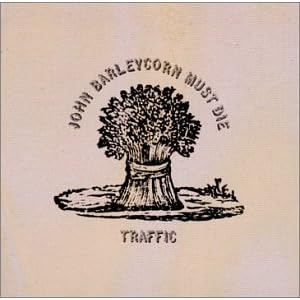Most people interested in the history of music will have some knowledge of the British Invasion which started with the release of the first Beatles records in America. It was an invasion that decimated all that had come before in American popular music. The irony of this invasion was that it was built on the American sound of rock and roll, rhythm and blues and the emerging soul sound, yet it was presented in an entirely new way.
Not much has been written about a second invasion that started to take place around 1967, once again built on the frame work of American blues. The bands spearheading this invasion were groups like The Jeff Beck Group, Jethro Tull, Ten Years After, Pink Floyd, The Faces, Humble Pie, Cream, Free, Traffic, Procul Harum and the list could be continued.
These bands had a passion for blues some stayed close to the blues format, other bands improvised their sound adding elements of English music such as folk to the blend. Bands like the Jeff Beck Group and later on The Faces played the blues in a loud, raucous and fairly loose fashion. American audiences hadn't seen these types of performances before and embraced this new sound. Often these bands were more popular in the U.S than they were in the U.K.
The band Traffic being the perfect example, they recorded some great albums especially from John Barleycorn Must Die in 1970, mixing blues, soul with the sounds of English folk, they were especially popular in the states but after the release of their first two albums in the U.K they were never able to build anything more than a cult following at home. Probably their most cohesive studio album was the 1971 release of Low Spark Of High Heeled Boys which saw the band stretch their sound towards jazz improvisation, especially on the lengthy opening of the title track. The more strident rock and roll style of their previous album John Barleycorn Must Die was replaced with a softer melancholic folk style, with Chris Wood taking a more prominent role with his noted ability on a variety of reed and brass instruments. The songwriting of Steve Winwood and Jim Capaldi took a more introspective turn.
Jethro Tull followed a similar passage, formed as a blues band with charismatic front man Ian Anderson playing the flute, they were able to achieve enormous success in the U.S as well as in the U.K. After delivering three blues based albums the group began to change their sound, incorporating elements of folk and concentrating more on lyrical structure. This style reached it's peak with the Aqualung album in 1971, a concept album (although the band themselves dislike the connotation) focusing on faith and religion. The album was able to mix their former bluesy approach with more acoustic flourishes, often within the same song the title track being a prime example.
Another group who followed a similar path was Ten Years After, like Traffic and Jethro Tull they were a blues band who found considerable success in the U.S before shifting their approach to focus on more acoustic numbers. Unlike the other two bands Ten Year After were a more ingrained blues band with a guitarist in Alvin Lee who was a more than adept soloist as can be seen in the groups performance of Goin Home at Woodstock. The release of their seventh album A Space in Time saw a more acoustic approach and less reliance on Lee's guitar pyrotechnics. There was also some experimentation with synthesizers and more layered keyboard sounds, an instrument that was used more sparsely on previous records.
I have listed groups like The Faces and Humble Pie as part of the second invasion even though both bands were not in formation until the late 1960's their genesis was definitely deeply rooted in the mid 60's period. Humble Pie rose form the ashes of The Small Faces led by vocalist Steve Marriot, he was duly replaced by Rod Stewart and Ron Wood and the Small Faces became simply the Faces. Humble Pie had started off as a more acoustic band, it was only at the behest of their American manager Dee Anthony that the band adopted a more rock/blues style that found it's peak on the live Performance: Live at the Fillmore East and the follow up studio release Smokin. But their sound soon became passe and indulgent with little improvement on their earlier albums. The Faces opted for a more rough and ready approach, barrelhouse piano, a loose groove dominated by drummer Kenny Jones with the drums given a prominent voice, and a very ragged guitar style from Ronnie Wood that was loud and dominant. Too top this off you had the whiskey soaked voice of Rod Stewart who was more than capable of belting out a number, and was equally assured on more softer numbers.
By the early 1970's the second British invasion had begun to fizzle out, replaced by glam rock, adult oriented stadium rock and the early beginnings of punk rock.


No comments:
Post a Comment